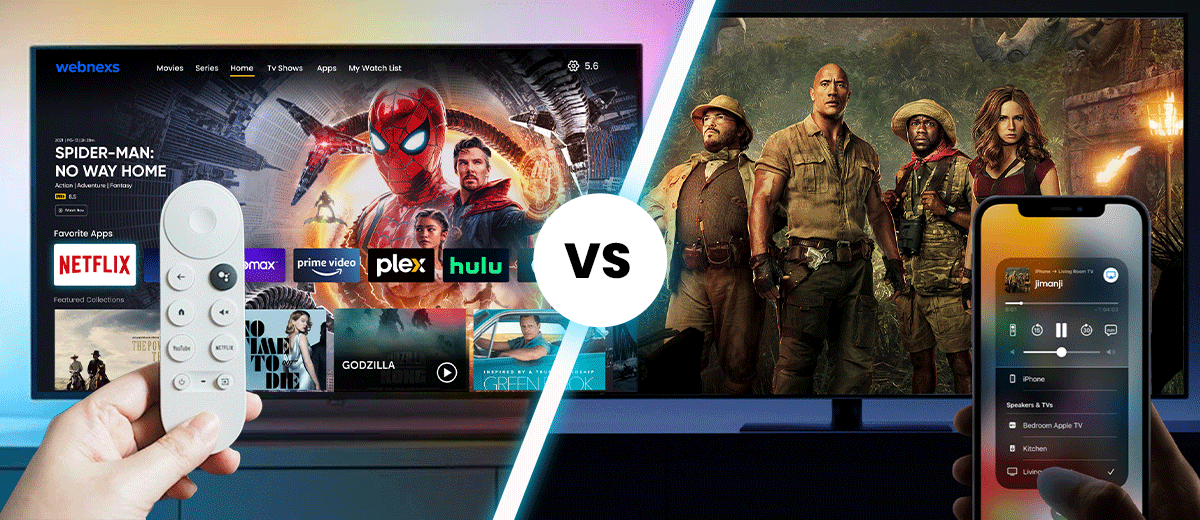Linear TV refers to the conventional method of television broadcasting, where programming is transmitted in real-time through the airwaves or cable/satellite networks. Streaming services, such as Netflix, Hulu, and Amazon Prime Video, that are delivered via the internet, are known as OTT or “over-the-top”. This blog delves into the contrast between Linear TV and OTT.
The main contrast between linear TV and OTT is that linear TV broadcasts shows in real-time, whereas OTT enables viewers to watch shows whenever they want. Linear TV is limited by the schedule of the broadcasting network, while OTT provides viewers with greater flexibility and control over what they watch and when they watch it.
What is Linear TV?
Linear TV is the conventional method of television broadcasting, wherein programming is transmitted in real-time through the airwaves or cable/satellite networks.Linear TV has been the dominant form of television viewing for many years, but with the rise of on-demand streaming services, it is facing new challenges.
The Benefits of Linear TV
The benefits of linear TV include:
- Access to a wide range of programming, including live sports, news, and events
- No need for an internet connection or streaming device
- The capability to watch shows as they are aired, which can be crucial for appointment viewing or live events.
Does Linear TV Still Have a Future?
While linear TV may not be as dominant as it once was, it is still a popular form of television viewing for many people. In fact, linear TV still accounts for the majority of television viewing in many countries around the world. While the rise of on-demand streaming services has presented new challenges for linear TV, it is unlikely that linear TV will become completely outdated anytime soon.
Read More : What Is Linear TV and Is It Becoming outdated?
What is OTT?
OTT stands for “over-the-top” and refers to streaming services that are delivered over the internet, such as Netflix, Hulu, and Amazon Prime Video. Unlike linear TV, OTT allows viewers to watch shows at their convenience, rather than at a scheduled time.
Why OTT is So Popular?
OTT is popular because it provides viewers with greater flexibility and control over what they watch and when they watch it. With OTT, viewers can watch shows on demand, and they can pause, rewind, or fast-forward through content as needed. Additionally, OTT services often offer a wider range of programming than linear TV, including exclusive content that is not available anywhere else.
Advantages Of OTT
Over The Top (OTT) refers to the delivery of audio, video, and other media over the internet, bypassing traditional distribution channels like cable and satellite TV. The OTT market has exploded in recent years, driven by the rise of streaming services like Netflix, Amazon Prime Video, and Disney+.
One of the primary benefits of OTT is that it enables viewers to watch their preferred shows and movies at their convenience, without being bound to a linear broadcast schedule. This has made OTT services particularly popular among younger viewers who prefer to consume media on their own terms.
Other advantages of OTT include:
- The ability to watch shows on demand, at any time and from any location
- Greater control over what you watch and when you watch it
- A wider range of programming, including exclusive content that is not available anywhere else
- The ability to pause, rewind, or fast-forward through content as needed
Difference Between Linear TV and OTT
Linear TV denotes the customary approach to watching television, where content is provided to viewers via broadcast networks or cable and satellite TV providers according to a fixed schedule. Conversely, OTT services are provided via the internet, allowing viewers to access the content they wish to watch on demand, at any time they desire.
Linear TV is typically more expensive than OTT services, and it also tends to have more restrictions on what viewers can watch and when they can watch it. Additionally, Linear TV is restricted by the number of channels accessible, whereas OTT services generally provide a broader selection of programming.
Another noteworthy disparity between linear TV and OTT is that OTT services can be accessed through various devices, including smartphones, tablets, and smart TVs. This makes OTT services much more convenient for viewers, as they can access their favorite content from anywhere, at any time.
Linear TV and OTT
| Linear TV | OTT |
| Delivers content via scheduled broadcast programming | Delivers content via the internet |
| Requires a cable or satellite subscription and specialized hardware (such as a set-top box) | Requires an internet connection and a device capable of streaming (such as a smart TV, gaming console, or streaming device) |
| Limited options for content and scheduling | Offers a wider variety of content, including original programming and on-demand options |
| Advertisements are the primary source of revenue | Revenue comes from subscription fees and/or advertising |
| Generally only available in a specific geographic area | Accessible from anywhere with an internet connection |
| Limited interactivity and personalization options | Offers personalized recommendations and the ability to interact with content (such as rating shows or leaving comments) |
Conclusion
The rise of OTT has fundamentally changed the way that we consume media, offering viewers greater flexibility, more choice, and a more personalized viewing experience. While linear TV continues to have a significant role in the television industry, it is clear that the future belongs to OTT services.
As technology continues to evolve, we can expect to see even more innovation in the OTT space, with new players entering the market and existing providers competing to offer the most compelling content and user experience.


